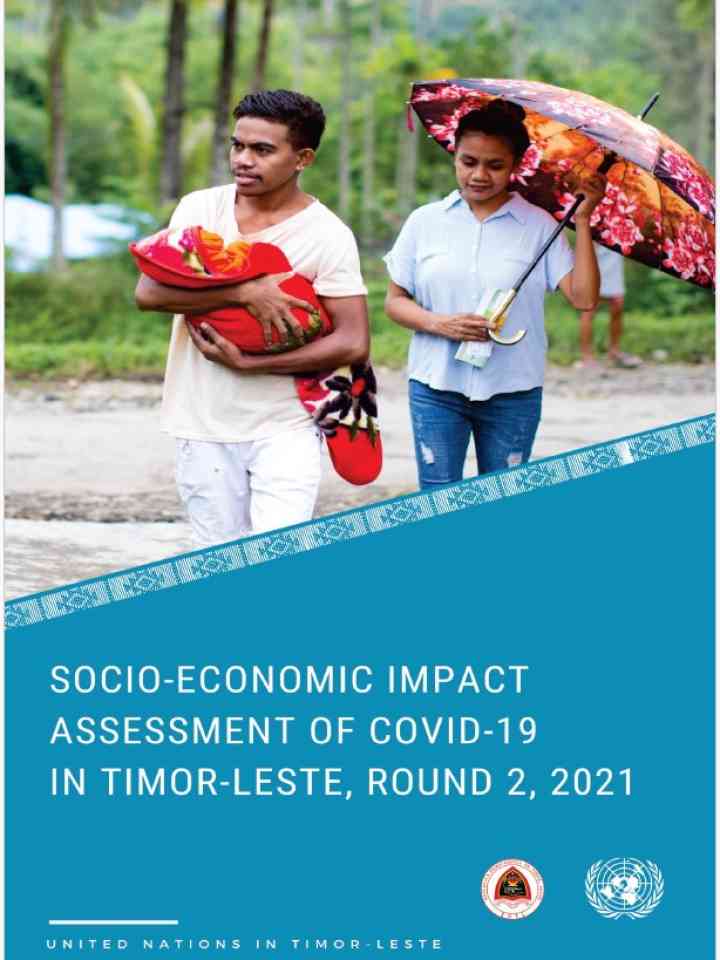Socio-Economic Impact Assessment Of Covid-19 in Timor-Leste, Round 2, 2021
The first positive case of COVID-19 emerged in Timor-Leste on 21 March 2020. A week later, 28 March 2020, the first national State of Emergency (SoE) was declared to prevent the spread of COVID-19, with an end date of 26 June 2020. The SoE, included actions such as domestic and international travel restrictions, closure of schools and physical distancing. Since the initial Decree, the SoE has been renewed monthly, and there have been sanitary fences and home confinements with varying degrees of restrictions and duration in different municipalities.
The nature of COVID-19 presented novel challenges for Timor-Leste. Restricting inter-municipality travel and the face-to-face interactions necessary for the large informal sector hit uniquely hard in a country with limited access to technological supports and relative geographic isolation. With 46 percent of the population being multidimensionally poor; and a significant majority of the population relying on small-scale subsistence farming, by the end of 2020, Timor-Leste’s progress towards SDG 1 (No poverty) and SDG 8 (Decent work and economic growth) had slowed. Like in many other small-island developing states, the impact of COVID-19 has also been compounded with climate change effects. In particular, Timor-Leste was hit by large-scale floods in April 2021.
The purpose of this study is to identify the impacts of COVID-19 on individuals, households, and communities, as well as MSMEs in Timor-Leste, and to develop recommendations to inform further recovery interventions. The specific objectives are to assess the social and economic impacts of the COVID-19 pandemic among the population, including poor and vulnerable households, and how individuals and households are coping with and managing risks; examine the gender dimension of the pandemic, particularly the extent to which women may be more affected than men; identify the measures needed to support the most vulnerable groups (including individuals living in poverty,older persons, youth, people with disabilities, women, and children); and assess how responsive the COVID-19 prevention, protection, and recovery measures were to the diverse needs of groups.
Explore further
